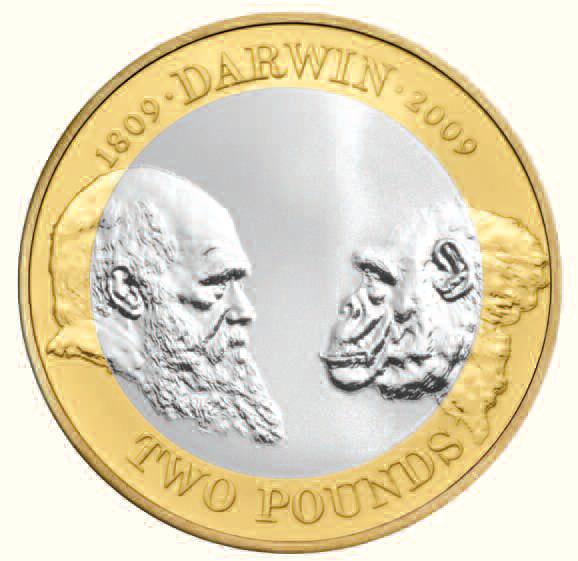Evolution as Design
Latest Story
The world is flat; astronauts did not go to the moon; and the Earth is 10,000 years old.
A recent poll reported that very few people in the US accept the theory of evolution as a valid explanation for the creation of life on Earth. According to the National Center for Science Education, in a 24-country poll, 41% of the respondents identified themselves as “evolutionists” and 28% as “creationists”, and 31% indicating they don’t know what to believe. In the US, 28% were “evolutionists”, with the “creationist” view held by 40%. The evolution view was most popular in Sweden, with the U.S. ranking 18.
According to Edward O. Wilson, creation myths were Darwinian in nature in that just about all cultures devised myths for survival. It gives members of society an explanation for human existence. Wilson goes on to say:
Tribal conflict, where believers on the inside were pitted against infidels on the outside, was a principal driving force that shaped biological human nature. The truth of each myth lived in the heart, not in the rational mind. By itself, mythmaking could never discover the origin and meaning of humanity. But the reverse order is possible. The discovery of the origin and meaning of humanity might explain the origin and meaning of myths, hence the core of organized religion. Wilson, Edward O. (2012-04-02). The Social Conquest of Earth (Kindle Locations 194-198). Norton. Kindle Edition.
Darwinian evolution and creation science (including intelligent design) are two world views, and Wilson asks if these worldviews can be reconciled? His answer is no. As he puts it:
Their opposition defines the difference between science and religion, between trust in empiricism and belief in the supernatural. Wilson, Edward O. (2012-04-02). The Social Conquest of Earth (Kindle Locations 199-200). Norton. Kindle Edition.
Wilson explains that from the 1859 theory of natural selection by Charles Darwin and Alfred Russell Wallace, science has provided in part the following:
There is a real creation story of humanity, and one only, and it is not a myth. It is being worked out and tested, and enriched and strengthened, step by step. Wilson, Edward O. (2012-04-02). The Social Conquest of Earth (Kindle Locations 224-225). Norton. Kindle Edition.
Science teachers, who work to offer a bridge between the world of science, and the world of youth have to give experiences in an environment that is open and not dogmatic. Students come to school with scientific perceptions that have been built up and learned over time. Students arriving in 9th grade biology have constructed ideas about origins, inheritance, genes, cells, traits, and the relationship between natural selection and the environment. Because these ideas overlap with their religious beliefs and their family’s political beliefs, there is often a conflict for them about evolution, and other controversial ideas in science. The important notion is that students enter courses in science with beliefs about evolution, climate change, and global warming, and each of these ideas has become politicized by various advocacy groups, and of course, the press.
Building on students prior knowledge is one of the guiding principles that teachers and researchers have discovered as crucial to deep learning. Work in the field of the learning sciences has shown that one of the best ways for students to learn is in classrooms where teachers build on their prior knowledge. In the context of teaching evolutionary theory, students views on evolution are probably not very different from the adult population’s acceptance of the theory of evolution as a valid explanation of the origin of life. Research by Ron Anderson suggests that it is a mistake to ignore students’ world views which may conflict with the scientific worldview of the origin of life. As I’ve suggested here, it flies in the face of constructivist learning and the learning sciences.
Science and religion are two differing world views. But because we have created a curriculum that compartmentalized knowledge and study, science teachers are put in a precarious position. Although we have experimented with interdisciplinary curriculum and study, science is taught in science class, and religion is taught in social science courses. Although I agree with Wilson that science and religion cannot be reconciled, it’s not a valid pedagogical strategy to ignore the interactions in student’s minds about origins.
Unfortunately, for more than a century, the teaching of evolution has been politicized. The famous Scopes Trial is the embodiment of the cultural war that succeeds to this day. In the 1970s creation science made its way into schools, only to be rebuffed by the courts. Intelligent design is a form of creationism, and especially promoted by the Discovery Institute. Politicians and state and local school board members have worked in concert with the Discovery Institute to pass laws either suggesting that I.D. be taught alongside evolution, or that “controversial” scientific theories such as evolution, global warming, and cloning be scrutinized under the banner of “academic freedom bills.”
Evolution by Design is a new eBook exploring how the teaching of evolution has become a rallying cry for conservatives and religious fundamentalists who think that creationism or intelligent design should be considered along and be given equal time as evolution. Creationism and intelligent design have been rejected by one court decision after another, but the forces behind this movement are still lurking.
They have made stealth appearances in Louisiana and Tennessee classrooms. Over the past four years, these two states have passed laws that protect teachers if they present scientific information about the full range of scientific views about biological and chemical evolution in applicable curricula or in a course of learning.
Behind these two laws is the Discovery Institute, a non-science propaganda organization whose chief purpose is to attack Darwinian evolution, and wedge intelligent design into the science curriculum. Foiled by the courts to pull a fast one and claim that I.D. is science, the Discovery Institute now hides behind its new campaign of preserving the ”academic freedom” of teachers.
The academic freedom bills that were passed in Louisiana (2008), and Tennessee (2012) disguise their intent of teaching creationism and intelligent design using clever and slick language that they are coming to the rescue of science teachers by passing a law that protects teachers’ academic freedom to present lessons questioning and critiquing scientific theories being studied including but not limited to evolution, the origins of life, global warming, and human cloning. Kind of a poor “Trojan horse” scenario, don’t you think? Where is the theory of gravity, plate tectonics, and atomic theory on their to do list?
Evolution by Design is comprised of four chapters
- The Law of Evolution: The title of this section comes from a statement made by James Watson in which he said, “Lets not beat around the bush–the common assumption that evolution through natural selection is a “theory “in the same way as string theory is a theory is wrong. EVOLUTION IS A LAW (with several components) that is as well substantiated as any other natural law, whether the Law of Gravity, the Laws of Motion, or Avogadro’s Law.”
- Evolution in the States: Over the past decade the evolution wars have been played out in a number of states, including: Pennsylvania, Florida, Georgia, Kansas, Texas, Tennessee and Louisiana. We take a look at these events.
- Intelligent Design. I.D. is creationism in disguise, and has been used as a wedge to get into the science curriculum as an alternative to Darwinian evolution. We ask what Darwin would think, and why a judge ruled that I.D. is not science.
- Teaching Evolution: Teaching evolution in church, teaching science “critically,” and issues that teachers face in the classroom.
A Kindle edition of Evolution as Design is available on Amazon, and is free through August 14, 2012.
This blog post has been shared by permission from the author.
Readers wishing to comment on the content are encouraged to do so via the link to the original post.
Find the original post here:
The views expressed by the blogger are not necessarily those of NEPC.

